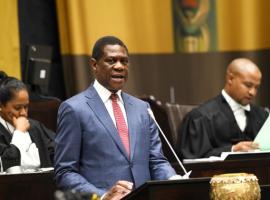SENGA BAY (Malawi), July 16 (NNN-AGENCIES) –: On the shores of Lake Malawi, a crowd eagerly awaits the arrival of a white and yellow cedarwood boat carrying its haul.
The crew of six deliver a single net of chambo, sardine and tiny usipa fish from the boat, just one of 72 vessels that land their catch every day on the beach at Senga Bay.
But overfishing and climate change have taken their toll.
Hundreds of local traders gather each morning and afternoon at Senga only to find that fish populations are falling in Lake Malawi, Africa’s third largest body of freshwater.
“We were hoping to catch a half-boat full or maybe a quarter-boat … but I’m afraid the fish are dwindling in numbers,” port manager Alfred Banda said.
“Before, we used to catch a full boat but now we are struggling,” he said, adding that a full boat would earn a team of between six and 12 fishermen about US$300.
Bordering three countries – Malawi, Tanzania and Mozambique – Lake Malawi stretches across more than 29,000 square kilometres with over 1,000 species of fish.
The 14,000 people living at Senga Bay depend on the lake for food and for their livelihood.
For both locals and climate experts, declining fish numbers reflect a combination of environmental change and overfishing that augurs ill for the future.
The World Bank ranks Malawi among the top 10 at-risk countries in Africa to climate change, with cyclones and floods among the major threats.
According to USAID, the number of rainfalls incidents in the aid-dependant country is likely to decrease – but each rainfall will be more intense, leading to droughts and floods.
The threat was highlighted in March when Malawi was hit by torrential rains from Cyclone Idai, killing 59 people. The storm also cut a swathe through Mozambique and Zimbabwe, leaving nearly 1,000 dead. — NNN-AGENCIES





